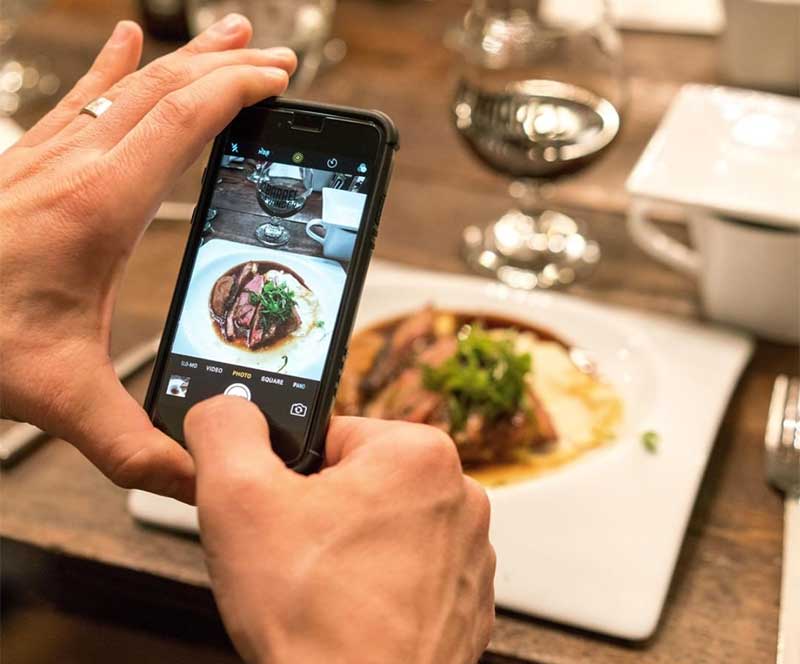If your restaurant is keeping the lights on amid the coronavirus pandemic, status-quo business plans no longer apply. Two experts in the off-premises space are recommending operators make critical changes immediately to get through this moment, while also setting their restaurants up for success when normalcy finally returns to the dining room.
Their advice ranges from launching a customer relationship management (CRM) system to identifying and communicating with your best customers in a personal way, bringing brand fans “into the problem with you,” offering family-style meal kits and mix-at-home drink kits wherever possible, turning on every online ordering channel to attract newly homebound customers, and reminding your existing base that you are open and ready to fulfill orders in a variety of new ways.

Zach Goldstein, CEO of Thanx
Zach Goldstein, CEO of Thanx, said the initial online ordering declines he’s seeing are “pretty overwhelming,” and that his newly distanced staff is seeing intense call volumes from restaurant clients frantically looking to spin up online ordering channels and CRM programs to generate orders and lessen their dependence on ordering channels charging hefty commissions.
While restaurants already doing significant drive-thru business are better positioned for temporary dining room closures and municipal lockdowns, Goldstein stressed that everyone else in the restaurant community needs to move quickly, both for the immediate future, as well as normal times, whenever they return.
“The vast majority of demand is not returning to restaurants over the next couple weeks, it’s just not going to happen,” he said. “What restaurants need to be doing to the extent possible is thinking about how they keep themselves well positioned to capitalize on the demand when it returns. The ones who do will take share and grow rapidly, and the ones that don’t will lose share and find themselves in even more pain, because the ground will have shifted underneath them.”
Based further down the Pacific Coast in Los Angeles, ChowNow has also seen surging call volumes from restaurants looking to launch their own, proprietary online ordering channels to ramp up delivery and curbside pickup without paying the large fees that are typically associated with national third-party delivery brands.
In response, his team has done everything it can to shorten lead times, so restaurants can launch new ordering channels in a matter of days, versus the two or three weeks that was the previous norm.
Beyond launching “native delivery,” as ChowNow CEO Chris Webb calls proprietary online ordering through a restaurant’s own app or website, the company is recommending all clients turn on order integration from Google and Yelp, along with every other online ordering channel, to reach as many customers as possible, especially those typing “delivery near me” into their browsers for the first time ever.
“You need to syndicate your menu to as many places as possible to get orders,” he said. “Even if they don’t like Yelp right now, they can turn it off in a month—get orders wherever you can right now.”
Immediate action items
Every brand clogging both work and personal inboxes with pandemic-related messages, Thanx’s Goldstein says personalized messages to customers are four to 10 times more effective than blanket mass messages sent out to a company’s entire customer database.
Being able to personalize a brand’s message is easier said than done. It requires a database of customers tracking who your best customers are and how they’ve ordered in the past, along with knowing their basic order patterns so your message hits home, rather than immediately being deleted or filtered out as spam.
With shortened lead times, Thanx can now get new clients up and running with loyalty programs and CRM within a week, with digital ordering capability still taking a couple of months, but far less than the previous 6-, 9- or 12-month windows that used to be the norm—and often dependent upon which point-of-sale system a restaurant already uses.
“These are the types of moments where brands that invested ahead in modern technology thrive,” he added.
When considering new online ordering channels to add, from local delivery providers to signing up with new national third-party brands, Goldstein stresses that operators need to avoid the short-term temptation to increase volume at the expense of profitability.
ChowNow is pushing all of its clients to activate curbside pickup functionality, sell gift cards through all online channels, and think creatively to change online menus to simpler, more interactive offerings like pasta kits that customers can finish up at home for a little entertainment with their meals.
In places where liquor laws have been loosened, allowing restaurants to sell off-premises alcohol or offer margarita kits, for example, Webb said such ideas need to be considered on a “restaurant-by-restaurant basis,” but serving basic needs with an at-home hospitality experience is a way to generate sales in this highly challenged environment.
When reacting to the shock of the pandemic and large-scale closures, Goldstein urged operators to also think about the post-crisis landscape, as well, with so many people trying new curbside and delivery options for the first time.
“I think we will see huge demand shifts back to restaurants, because there’s a reason people go to restaurants,” he added. “It may not look exactly the way it was before, because a significantly larger volume of customers will have experienced off-premises dining.”
Bigger thinking for tomorrow
With previous trends, especially in the off-premises realm, only accelerating in this pandemic, Goldstein said it’s worth considering longer-term investments so your post-crisis technology stack is much more capable, and therefore better positioned for future trends.
“It’s not about getting one more visit back once the quarantines are lifted,” Goldstein said. “It’s about getting that one visit, and then sustaining that relationship to get 10 visits out of that one customer—you gotta be able to deliver on that first visit so they reset their relationship with your brand and become dedicated to it.”
Noting that ChowNow has on-boarded 1,000 new restaurants in the previous week, Webb said his team is working to add additional functionality to its curbside offering, which he said will likely pay dividends whenever the worst of the crisis has passed.
“As delivery costs go up just in general, outside of this pandemic that we’ll be in for a while, I think curbside pickup is going to be a bigger and bigger feature” for many in the restaurant industry, he said.
Of course, pivots to delivery and curbside aren’t good fits for many restaurant concepts. To that end, Goldstein underscored a future-leaning approach, even if that means temporarily closing the restaurant.
“In some cases that answer is to shut down the operation now, preserve as much cash as you can, don’t try to just make revenue in an unprofitable way, and stand by the return when the time is right,” he said. “Boy, I do not envy the position of those restaurant leaders who have had to make such a challenging decision.”




